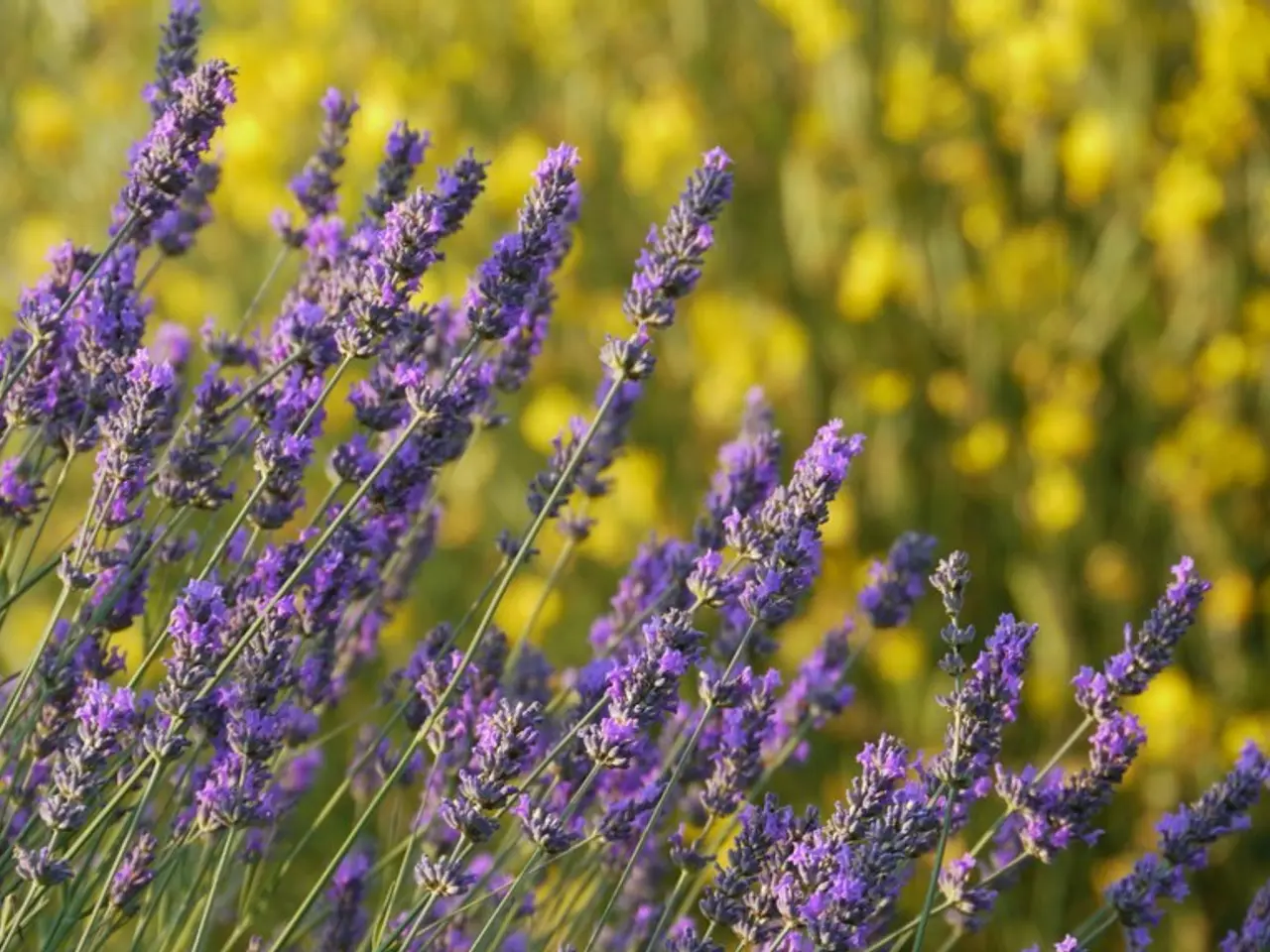Gardens with Gravel and Driveways: Plants Thriving in Dry Conditions - Offering Options for Both Sun and Shade
In recent times, many homeowners are moving towards low-maintenance and water-friendly landscapes, such as gravel gardens. These gardens, while seemingly barren, can be transformed into vibrant, thriving spaces with the right choice of plants.
Plants for Sunny Gravel Gardens
Stachys byzantina, commonly known as 'Lamb's ears', is an ideal gravel garden plant. It produces a low mat of evergreen leaves and chunky spikes of small purple flowers. Nick Hamilton, plant expert at Barnsdale Gardens, recommends trying Stachys byzantina 'Big Ears' for gravel gardens.
Another sun-loving plant is Gaura, known for its tolerance to drought and ability to flower for a long period over the summer months if planted in free-draining soil and a sunny position.
Rosemary, bearded iris, yarrow, and chives are also suitable for sunny gravel gardens, as suggested by Carole Crawshaw.
Plants for Shady Gravel Gardens
For shady locations, experts recommend shade-tolerant, drought-resistant plants such as ferns, hostas, and heucheras.
Cotoneaster dammeri and Cotoneaster procumbens 'Queen of Carpets' are good plants for shade in gravel gardens, producing white flowers and red fruits that last through winter.
Euphorbias, such as Euphorbia x pasteurii with its sweet-scented flowers, and Euphorbia myrsinites, which is sprawling and suitable for planting at the front of a garden, are drought-tolerant and make great choices for a gravel garden design.
Architectural Additions
Phlomis produce bee-friendly flowers regularly and provide winter interest in the form of their seedheads, making them a great architectural addition to a garden. Salvias, which come in every color, are resistant to dry, poor soils, adding a splash of color to your gravel garden.
Gravel Driveway Gardens
Thymus serpyllum 'Pink Chintz', a prostrate variety of thyme, is suitable for a gravel front driveway garden and copes with being run over by a car wheel. Purple spoon-leaved stonecrop (sedum spathulifolium 'Purpureum') is a hardy plant that can survive in less favorable soil conditions, provided that the soil is free-draining and it has some sun.
Lavender and Euphorbias
Lavender can thrive in dry areas and is ideal for the front of borders. Lavandula angustifolia 'Essence Purple' is recommended for gravel gardens as it tolerates drought conditions well and provides year-round interest. Shrubby euphorbias are easy to grow and prefer well-draining soil in a sunny or partially shaded area. They benefit from annual mulching if their soil is prone to weeds or very poor.
Self-Sowing Seeds
To keep a gravel garden looking green and inviting, it's important to pack the space with planting to maintain a lush feel. Carole Crawshaw suggests trying self-sowing seeds like Mexican Fleabane, Moon Daisy, and Fox and cubs in gravel gardens and driveways.
Cistus
Cistus usually tend to be small, evergreen shrubs with white or pink flowers. They should be grown in well-draining soil in full sun and attract pollinators for an eco-friendly garden. 'Salvia x jamensis 'Belle De Loire' is a flexible plant that produces flowers from late spring to early autumn and works well in gravel gardens.
By carefully selecting plants that love well-draining soils and thrive in dry conditions, you can create a beautiful, low-maintenance gravel garden that is both visually appealing and beneficial for pollinators.
Read also:
- Peptide YY (PYY): Exploring its Role in Appetite Suppression, Intestinal Health, and Cognitive Links
- Toddler Health: Rotavirus Signs, Origins, and Potential Complications
- Digestive issues and heart discomfort: Root causes and associated health conditions
- House Infernos: Deadly Hazards Surpassing the Flames








